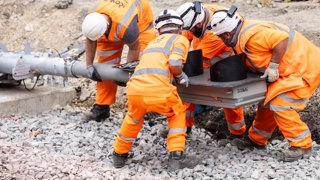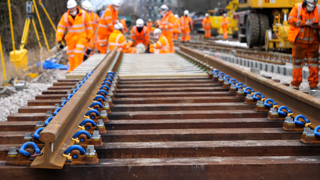The Scottish government is “actively considering” using public green bonds and non-profit borrowing options to finance a new fleet of trains, RAIL understands.
Drivers’ union ASLEF had called for this form of finance, after ScotRail issued a periodic indicative notice to seek market engagement on replacing “some of its ageing diesel and electric multiple units with a new fleet of electric multiple units (EMUs) and battery electric multiple units (BEMUs)”.
The Scottish government is “actively considering” using public green bonds and non-profit borrowing options to finance a new fleet of trains, RAIL understands.
Drivers’ union ASLEF had called for this form of finance, after ScotRail issued a periodic indicative notice to seek market engagement on replacing “some of its ageing diesel and electric multiple units with a new fleet of electric multiple units (EMUs) and battery electric multiple units (BEMUs)”.
RAIL understands that Transport Scotland is weighing up whether to source the funds through green bonds or through the UK National Loans Fund - which is the current source of most Scottish government borrowing.
Significantly, ministers are also considering the Swiss-based non-profit financier Eurofima (a co-operative venture of European state-owned railways) as an alternative to the commercial lenders that support the private rolling stock companies.
ScotRail currently has the third oldest fleet of trains on the British network, with an average age of 24.3 years as of March 2024.
As well as HSTs (which are up to 49 years old) operating inter-city services, the state-owned operator has a significant fleet of British Rail-era multiple units. These include Class 153, ‘156’ and ‘158’ DMUs and Class 318 and ‘320’ EMUs.
The notice says it is “anticipated that the core order will be for approximately 69 units, potentially comprising around 41 EMUs and 28 BEMUs”.
RAIL understands that ScotRail wants potential suppliers to engage with the company to understand requirements for numbers, timescales and technical requirements. ScotRail will then use this information to make the case to the Scottish government to fund the new trains.
“This is a positive step in the process for planned new suburban trains for ScotRail,” said ScotRail Strategy and Planning Director Scott Prentice.
Welcoming the announcement, ASLEF called for a change in approach in how the trains would be procured.
“If the government was to take up our idea to use green bonds, it would finally drive out the privateer, parasite, rolling stock companies from Scotland’s railways,” said Kevin Lindsay, the union’s organiser in Scotland.
He pointed to a report the union commissioned from Glasgow University academics Andrew Cumbers and Grace Brown earlier this year, which argued that ministers could use Holyrood borrowing powers and issue green bonds to purchase new trains.
These work like traditional bonds - where an issuer raises capital from investors and commits to repaying with interest. But the money must be used for projects that contribute to sustainability.
A Scottish government spokesperson said: “We note and welcome ASLEF’s consideration of options to finance new trains in a publicly owned railway. Public ownership has created the opportunity to deliver a railway which is run for the benefit of customers.
“As with all long-term government action, spend in this area will be aligned with future Capital Spending Review and Infrastructure Investment Plan cycles. With ambitions of such magnitude regarding rail decarbonisation and fleet replacement, it is imperative that there is a relentless focus on cost and delivery efficiency, and maximising benefits.”
The final number of units ordered will be defined in a contract notice published by ScotRail at a later date.
ScotRail plans to award a contract for the replacement of the HST fleet by the end of this year.
Login to continue reading
Or register with RAIL to keep up-to-date with the latest news, insight and opinion.


















Login to comment
Comments
No comments have been made yet.